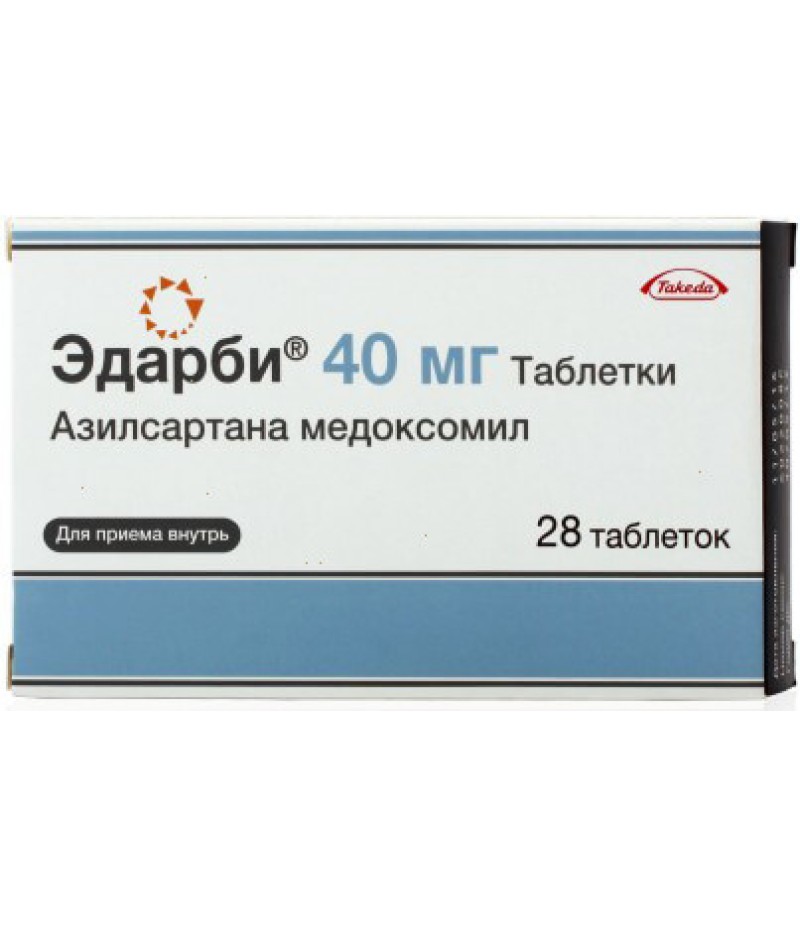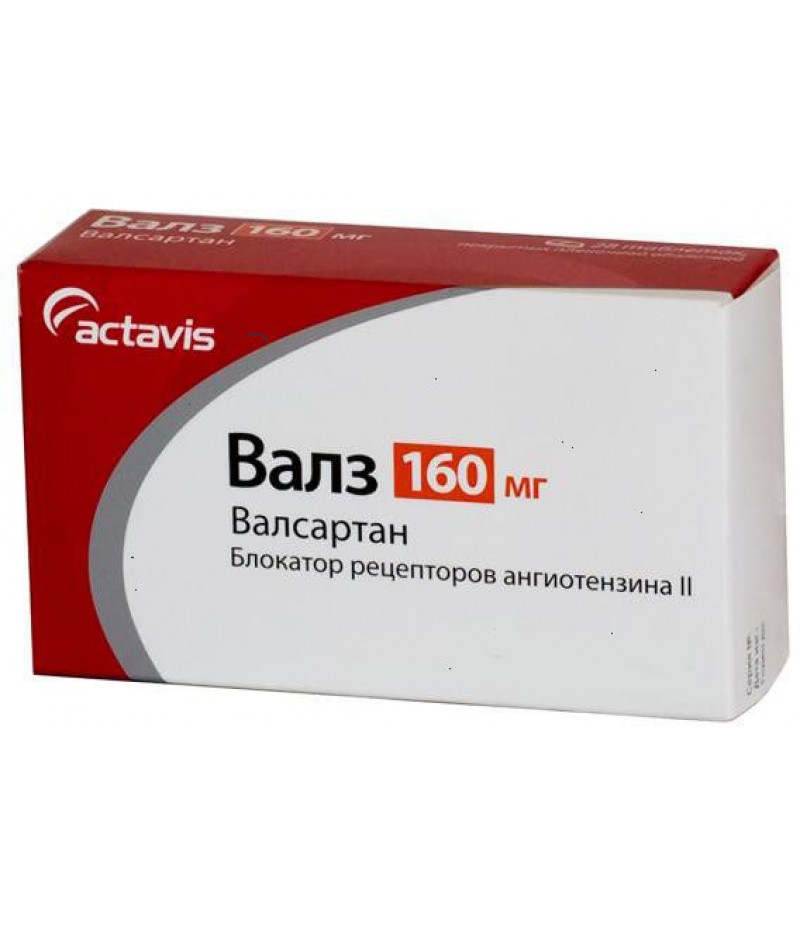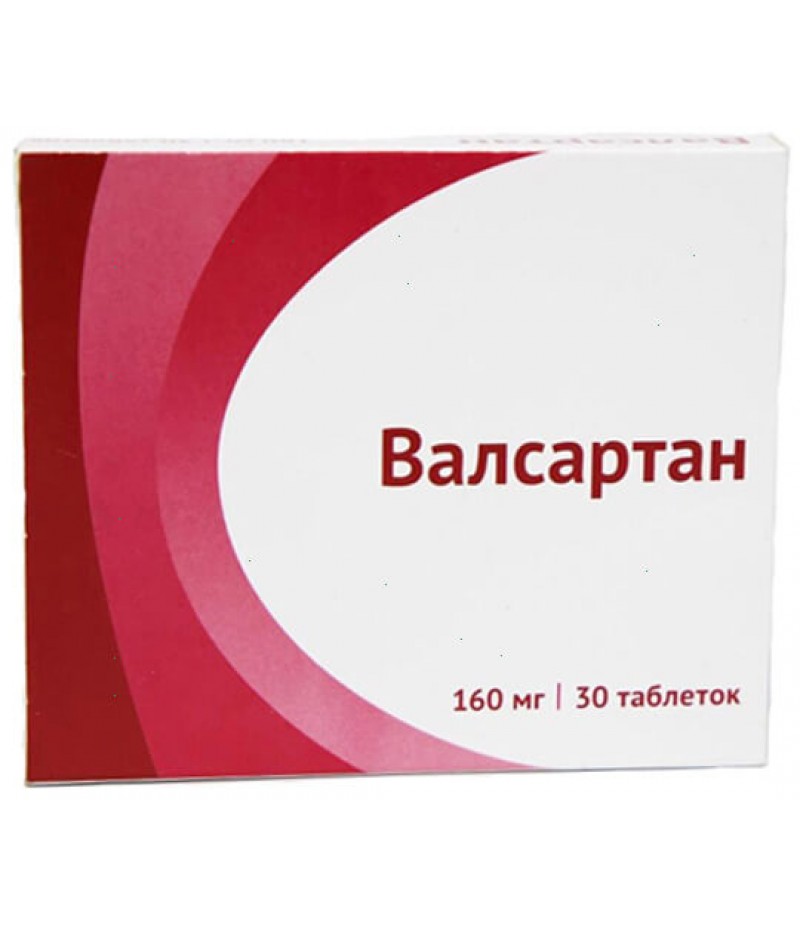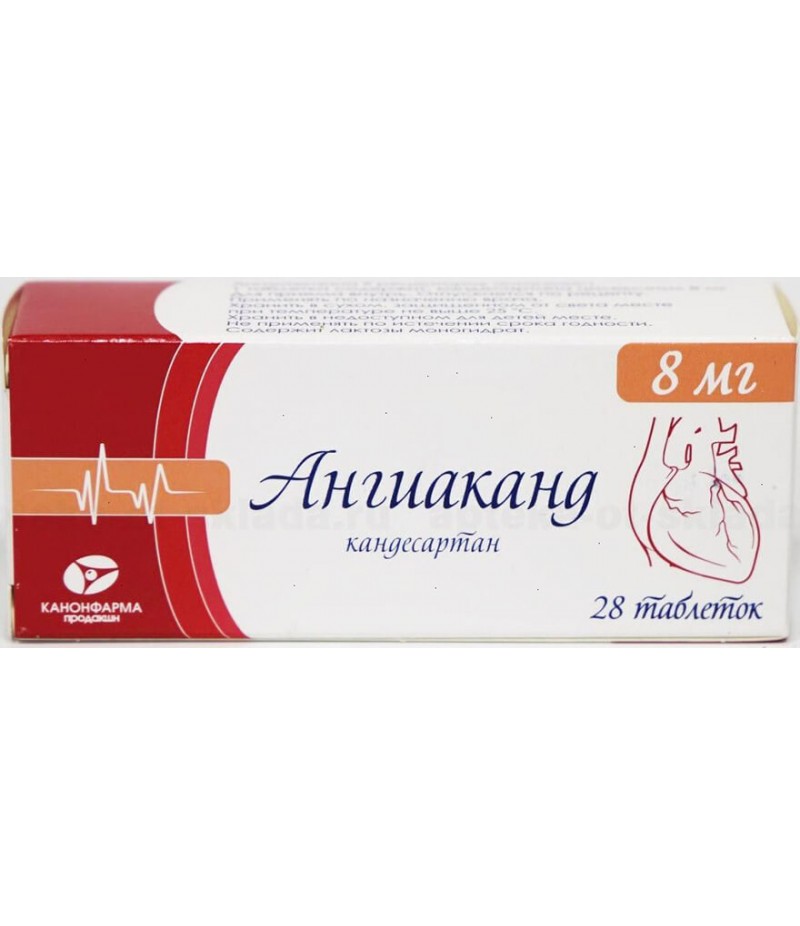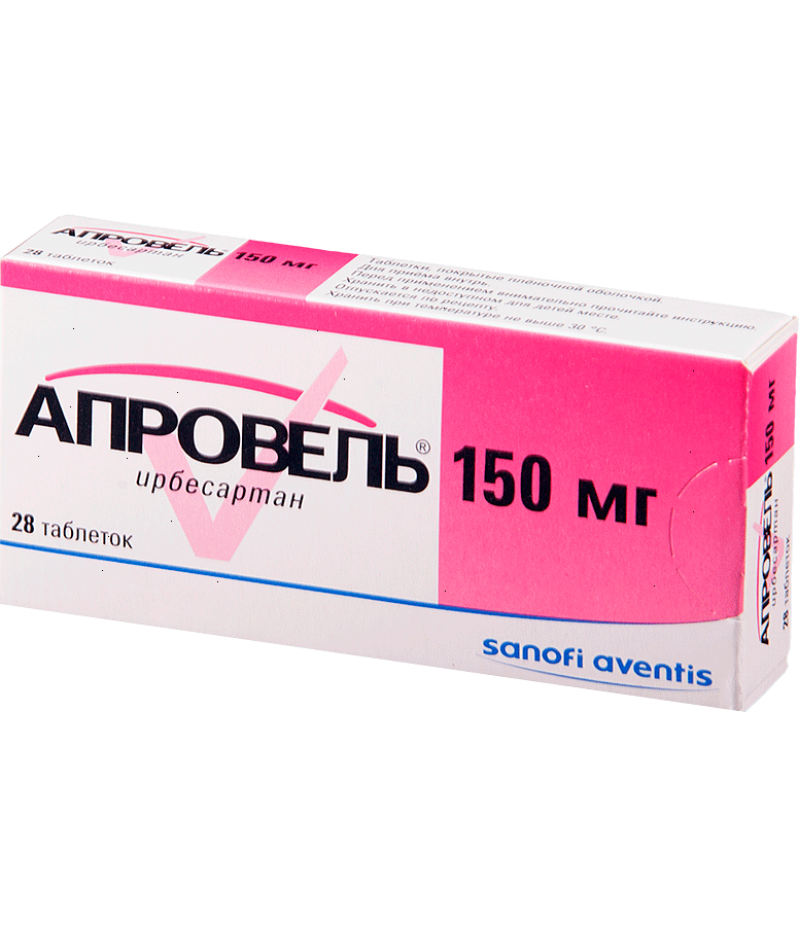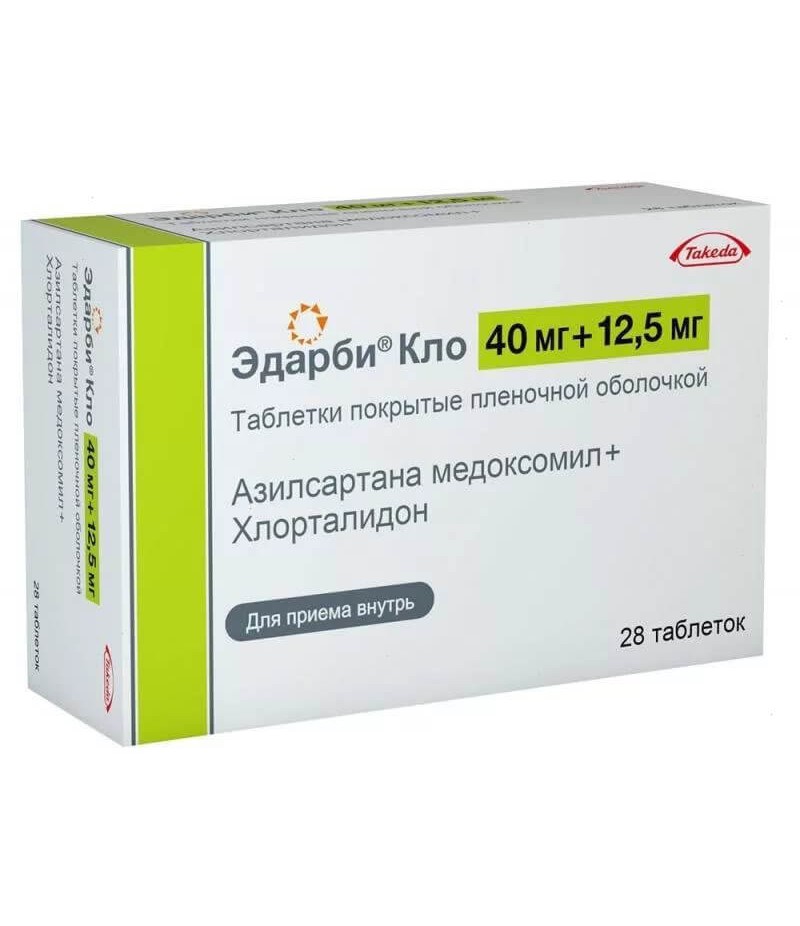Edarbi tabs 40mg #28
- $27.39
- 3 or more $27.20
- Availability:In Stock
Edarbi instructionYou can buy Edarbi hereComposition1 tablet of 20 mg contains:Active ingredient: azilsartan medoxomil potassium 21.34 mg corresponds to azilsartan medoxomil 20 mgExcipients: mannitol 47.815 mg, fumaric acid 1 mg, ..
Tags: tabs
Edarbi instruction
You can buy Edarbi here
Composition
1 tablet of 20 mg contains:
Active ingredient: azilsartan medoxomil potassium 21.34 mg corresponds to azilsartan medoxomil 20 mg
Excipients: mannitol 47.815 mg, fumaric acid 1 mg, sodium hydroxide 0.345 mg, hyprolosis 2.7 mg, croscarmellose sodium 6.9 mg, microcrystalline cellulose 9 mg, magnesium stearate 0.9 mg.
1 tablet 40 mg contains:
Active ingredient: azilsartan medoxomil potassium 42.68 mg corresponds to azilsartan medoxomil 40 mg
Excipients: mannitol 95.63 mg, fumaric acid 2 mg, sodium hydroxide 0.69 mg, hyprolosis 5.4 mg, croscarmellose sodium 13.8 mg, microcrystalline cellulose 18 mg, magnesium stearate 1.8 mg.
1 tablet 80 mg contains:
Active ingredient: azilsartan medoxomil potassium 85.36 mg corresponds to azilsartan medoxomil 80 mg
Excipients: mannitol 191.26 mg, fumaric acid 4 mg, sodium hydroxide 1.38 mg, hyprolosis 10.8 mg, croscarmellose sodium 27.6 mg, microcrystalline cellulose 36 mg, magnesium stearate 3.6 mg.
ATC code: C09CA09
Pharmacotherapeutic group:
Angiotensin II receptor antagonist.
Description
20 mg tablets:
From white to almost white, round biconvex tablets with engraved “ASL” on one side and “20” on the other.
40 mg tablets:
From white to almost white, round biconvex tablets with engraved “ASL” on one side and “40” on the other.
80 mg tablets:
From white to almost white, round biconvex tablets with engraved “ASL” on one side and “80” on the other.
Pharmacodynamics
Azilsartan medoxomil, the active ingredient of Edarbi, is a specific antagonist of angiotensin II type 1 receptors (AT1). Azilsartan medoxomil is a prodrug for oral administration. Azilsartan medoxomil quickly turns into an active azilsartan molecule, which selectively prevents the development of the effects of angiotensin II by blocking its binding to the AT1 receptors in various tissues. Angiotensin II is the primary vasoactive hormone of the renin-angiotensin-aldersterone system (RAAS) with effects including vasoconstriction, cardiac stimulation, stimulation of synthesis and release of aldosterone, and, as a result, renal reabsorption of sodium.
The blockade of AT1 receptors inhibits the negative regulatory response of angiotensin II to renin secretion, but the resulting increase in plasma renin activity and the level of circulating angiotensin II does not suppress the antihypertensive effect of azilsartan.
The antihypertensive effect of azilsartan medoxomil develops during the first 2 weeks of use, with a maximum therapeutic effect being achieved after 4 weeks. A decrease in blood pressure (BP) after ingestion of a single dose is usually achieved within a few hours and persists for 24 hours.
The syndrome of "cancellation" (a sharp increase in blood pressure after drug withdrawal) after a sudden cancellation after prolonged therapy (for 6 months) with Edarbi was not observed.
Safety and efficacy of the drug does not depend on the age of patients, but greater sensitivity to lower blood pressure in some elderly patients cannot be excluded. As with the use of other angiotensin II receptor antagonists and angiotensin converting enzyme (ACE) inhibitors, the antihypertensive effect is less pronounced in patients of the Negroid race (usually a population with low plasma renin activity). The simultaneous use of Edarbi 40 mg and 80 mg with dihydropyridine blockers of “slow” calcium channels (amlodipine) or thiazide diuretics (chlorthalidone) leads to an additional decrease in blood pressure compared with antihypertensive drugs used in monotherapy (see the section on Interaction with Other Drugs) .
Impact on repolarization processes
Edarbi's potential to increase the QT / QTc interval was performed in healthy volunteers during the QT / QTc study. At a dose of 320 mg
Edarbi increase the QT / QTc interval is not marked.
QTc - corrected (relative to heart rate (HR)) value of QT interval, relative value.
Since the duration of the QT interval depends on the heart rate (lengthening when it is slowed down), it must be corrected for HR to be assessed.
Lengthening of the QT interval reflects the heterogeneity of the processes of repolarization of the ventricular myocardium, and is regarded as an independent indicator, indicating the possibility of the appearance of fatal cardiac rhythm disturbances.
Pharmacokinetics
Suction
Azilsartan medoxomil is a prodrug. After ingestion, it is converted to a pharmacologically active metabolite, azylsartan, during absorption from the gastrointestinal tract by the action of the enzyme carboxymethylene butenolidase in the intestine and liver.
Estimated absolute bioavailability of azilsartan medoxomil when administered is approximately 60% according to the concentration profile in the blood plasma. The maximum concentration (Cmax) of azylsartan in plasma is, on average, reached within 1.5 to 3 hours after ingestion. Eating does not affect the bioavailability of azilsartan.
Distribution
The volume of distribution of azilsartan is about 16 liters. Azilsartan binds to plasma proteins (more than 99%), mainly with plasma albumin. The bond with plasma proteins is kept constant when the concentration of azilsartan in the blood plasma is much higher than the range achieved when taking the recommended doses.
Data on the use of the drug during pregnancy and during breastfeeding are not available. Azilsartan penetrates the placenta of pregnant rats and is excreted into the milk of lactating rats (see section Use during pregnancy and during breastfeeding).
Studies on animals with radioactive labels showed that the amount of azilsartan penetrating the blood-brain barrier is minimal.
Metabolism
Azilsartan is metabolized to two primary metabolites predominantly in the liver. The main metabolite in the blood plasma is formed by O-dealkylation and is designated as the metabolite M-II, the minor metabolite is formed by decarboxylation and is designated as the metabolite M-I. The AUC (area under the concentration-time pharmacokinetic curve) for these metabolites in humans is 50% and less than 1%, respectively, compared to azilsartan. M-I and M-II do not affect the pharmacological activity of Edarbi. The main enzyme responsible for the metabolism of azilsartan is the isoenzyme CYP2C9.
Removal
Azilsartan and its metabolites are excreted both through the intestines and the kidneys. Studies have shown that after oral administration of azilsartan medoxomil, about 55% (mostly as metabolite MI) is found in the feces and about 42% (15% in the form of azilsartan, 19% in the form of metabolite M-II) in urine . The half-life of azilsartan is about 11 hours and renal clearance is about 2.3 ml / min. The equilibrium concentration of azylsartan is reached within 5 days and its accumulation in the blood plasma does not occur with a single daily application.
Linearity / Nonlinearity
The pharmacokinetics of azilsartan in azilsartan medoxomile is proportional to the dosage in the dose range from 20 mg to 320 mg after a single or multiple ingestion.
Children
The pharmacokinetics of azilsartan in children under the age of 18 years has not been studied.
Elderly patients
The pharmacokinetics of azilsartan in young (18–45 years) and elderly (65–85 years) patients is not significantly different.
Renal failure
In patients with mild, moderate and severe renal failure, the AUC was increased by + 30%, + 25% and + 95%, respectively. An increase (+ 5%) in AUC was not observed in patients with end-stage renal failure on hemodialysis. Clinical data on pharmacokinetics in patients with severe or terminal stage of renal failure are not available.
Azilsartan is not excreted from the systemic circulation through hemodialysis.
Liver failure
The use of Edarbi for more than 5 days in patients with mild (grade A on the Child-Pugh scale) or moderate (grade B on the Child-Pugh scale) severity of liver failure leads to a slight increase in AUC (1.3 - 1.6 times, respectively). The pharmacokinetics of Edarbi in patients with severe (Child-Pugh class C) degree of liver failure has not been studied.
Gender
The pharmacokinetics of azilsartan in men and women is not significantly different. Dose adjustment based on gender is not required.
Race
The pharmacokinetics of azilsartan are not significantly different depending on the race of the patients. Dose adjustment depending on race is not required.
Indications for use
Essential hypertension
Contraindications
hypersensitivity to the active substance and other components of the drug;
pregnancy;
concurrent use of aliskiren in patients with diabetes mellitus;
age up to 18 years (efficacy and safety have not been established);
severe liver dysfunction (more than 9 points on the Child-Pugh scale) (no experience of use).
Carefully
severe chronic heart failure (NYHA class IV functional class);
severe renal failure (creatinine clearance <30 ml / min);
bilateral renal artery stenosis and arterial stenosis of a single functioning kidney;
ischemic cardiomyopathy;
ischemic cerebrovascular diseases;
condition after kidney transplantation;
conditions accompanied by a decrease in the volume of circulating blood (BCC) (including vomiting, diarrhea), as well as in patients on a diet with restricted salt;
with simultaneous use with large doses of diuretics;
primary hyper aldosteronism;
hyperkalemia;
stenosis of the aortic and mitral valves;
hypertrophic obstructive cardiomyopathy (GOKMP);
age over 75 years.
If you have one of the listed diseases, be sure to consult your doctor before taking Edarbi.
Use during pregnancy and during breastfeeding
Use during pregnancy
Animal studies have shown that azilsartan and M-II penetrate the placental barrier.
Patients planning a pregnancy should begin treatment with alternative antihypertensive drugs with an established safety profile for pregnant women. Immediately after confirmation of pregnancy, you should stop taking Edarbi and, if necessary, start a course of treatment with drugs approved for use during pregnancy.
Newborns whose mothers have received Edarbi therapy may develop arterial hypotension, and therefore newborns must be under close medical supervision.
Breast-feeding
There is no information about the ability of azilsartan and / or its metabolites to penetrate into breast milk. Animal studies have shown that azilsartan and M-II are excreted into the milk of lactating rats.
Due to the lack of experience with the use of Edarbi in women during breastfeeding, its use in this category of patients is not recommended. Preferably the use of drugs with the most studied safety profile, especially during the care of a newborn or premature baby.
Fertility
Data on the effects of Edarbi on fertility in humans are not available. Preclinical studies have shown no effect on male or female fertility in rats.
Dosage and administration
Edarbi is taken orally once a day, regardless of the meal time. The recommended initial dose is 40 mg 1 time per day. If necessary, further reduction of blood pressure can be increased to a maximum dose of -80 mg once a day.
The maximum daily dose is 80 mg.
In case of inadequate control of blood pressure in monotherapy with Edarbi, its simultaneous use with other antihypertensive drugs is possible, including diuretics (chlorthalidone and hydrochlorothiazide) and dihydropyridine blockers of “slow” calcium channels (amlodipine).
Duration of treatment
Edarbi should be taken daily, without interruption. In case of discontinuation of treatment, the patient should inform the doctor about it.
Skip dose
In case of skipping the next dose, the next dose should be taken at the usual time. Do not take a double dose of Edarbi.
Elderly patients (65 years and older)
No adjustment of the initial dose of Edarbi in elderly patients is required. However, in patients over the age of 75, a dose of 20 mg may be considered as the initial dose (the risk of arterial hypotension increases).
Patients with impaired renal function
There is no clinical experience with the use of Edarbi in patients with hypertension with severe renal impairment and end-stage renal failure, so the drug should be used in this category of patients with caution.
Correction of the dosing regimen is not required in patients with impaired renal function of mild and moderate severity.
Patients with impaired liver function
The use of the drug in patients with severe hepatic impairment is not recommended due to the lack of clinical experience (see Contraindications section).
Due to the limited experience of using Edarbi in patients with mild and moderately impaired liver function, it is recommended to start treatment with a dose of 20 mg 1 time per day and carry it out under close observation.
Reduction in circulating blood volume (BCC)
Edarbi should be prescribed to patients with reduced BCC and / or hyponatremia (for example, patients with prolonged vomiting, diarrhea, or taking large doses of diuretics) only under strict medical supervision. It is also recommended to begin treatment with a dosage of 20 mg 1 time per day.
Heart failure
Due to the lack of clinical experience, Edarbi should be used with caution in hypertensive patients with severe chronic heart failure (functional class IVHA classification NYHA).
Negroid race
Dose adjustment is not required in patients of the Negroid race. As in the case of other angiotensin II receptor antagonists (AT1) and ACE inhibitors, patients of the Negroid race have a lower BP in comparison with the rest of the population. In this regard, in order to adequately control blood pressure in patients of the Negroid race, an increase in the dose of Edarbi and complex therapy more often than in other patients may be necessary.
Side effect
The frequency of adverse reactions was determined in accordance with the recommendations of the World Health Organization: very often (> 1/10); often (> 1/100, <1/10); infrequently (> 1/1000, <1/100; rarely (> 1/10 000, <1/1000); very rarely (<1/10 000), including individual messages; unspecified frequency (the frequency cannot be calculated using the available this).
Description of individual adverse reactions
With the simultaneous use of Edarbi with chlorthalidone, the frequency of adverse reactions — a pronounced decrease in blood pressure and an increase in the concentration of creatinine — increases in frequency of occurrence: from infrequent to frequent.
With the simultaneous use of Edarbi with amlodipine, the incidence of adverse reactions — peripheral edema — increases from infrequent to frequent, but is less common than with amlodipine monotherapy.
Rarely observed angioedema, swelling of the face, lips and periorbital edema.
As with the use of other angiotensin II receptor antagonists and ACE inhibitors, the simultaneous use of Edarbi with diuretics (for example, chlorthalidone) leads to an increase in the increase in creatinine concentration. An increase in creatinine concentration with simultaneous use of Edarbi with diuretics is associated with a large decrease in blood pressure compared to Edarbi monotherapy. Most of these effects were short-term or non-progressive, while patients continued therapy. After discontinuation of the drug, most cases of an increase in the concentration of creatinine that were not treated during treatment were reversible. Creatinine concentration in most patients returned to baseline values or values close to baseline.
The treatment with Edarbi showed a slight increase in serum uric acid concentration (10.8 µmol / L) as compared with placebo (4.3 µmol / L).
Just as with the use of other RAAS inhibitors, a slight decrease in hemoglobin and hematocrit was observed in monotherapy (decreased on average by about 3 g / l and 1% by volume, respectively).
If any of the side effects indicated in the instruction are aggravated, or you have noticed any other side effects that are not indicated in the instruction, inform your doctor.
Overdose
The experience of using Edarbi in adults in doses up to 320 mg / day for 7 days shows that the drug is well tolerated.
Symptoms
pronounced decrease in blood pressure, dizziness.
Treatment
With a pronounced decrease in blood pressure, give the patient a “lying down” position, raise his legs, take measures to increase the volume of circulating blood (BCC); symptomatic therapy.
Azilsartan is not excreted from the systemic circulation through dialysis.
Interaction with other drugs
Lithium
There was a reversible increase in serum lithium concentration and toxicity during simultaneous use of lithium preparations and ACE inhibitors and lithium preparations with angiotensin II receptor antagonists. Therefore, the simultaneous use of azilsartan medoxomil in combination with lithium preparations is not recommended (see section Special instructions). If necessary, the use of appropriate combination therapy is recommended to regularly monitor the content of lithium in the serum.
Nonsteroidal anti-inflammatory drugs (NSAIDs)
With the simultaneous use of antagonists of angiotensin II and NSAIDs (for example, selective COX-2 inhibitors (cyclooxygenase-2), acetylsalicylic acid (more than 3 g / day) and non-selective NSAIDs, the antihypertensive effect may be reduced. With the simultaneous use of antagonists of angiotensin II and NSAIDs may increase the risk of impaired renal function and an increase in the content of potassium in the blood serum. Therefore, at the beginning of treatment, patients are recommended to regularly take a sufficient amount of fluid and monitor renal function.
Preparations of potassium and potassium-sparing diuretics, heparin
The simultaneous use of potassium-sparing diuretics, potassium preparations, salt substitutes containing potassium and other medicines (for example, heparin) with azilsartan medoxomil can lead to an increase in the content of potassium in the blood serum (see Special Instructions section). Patients during combination therapy should monitor the content of potassium in the serum.
Double blockade of the renin-angiotensin-aldosterone system (RAAS)
Double blockade of RAAS antagonists of angiotensin II receptors, ACE inhibitors, or aliskiren is associated with an increased risk of arterial hypotension, hyperkalemia, and impaired renal function (including acute renal failure) compared with monotherapy.
Additional Information on Azilsartan Medoxomil Interaction
Pharmacokinetic interactions were not observed with the simultaneous use of azilsartan medoxomil or azilsartan with amlodipine, antacid preparations (magnesium and aluminum hydroxide), chlorthalidone, digoxin, fluconazole, glibenclamide, ketoconazole, metformin and warfarin.
Azilsartan medoxomil is converted to a pharmacologically active metabolite azylsartan during absorption from the gastrointestinal tract under the action of the enzyme carboxymethylene butenolidase in the intestine and liver. In vitro studies have shown that interactions based on enzyme inhibition are unlikely.
Diuretics and other antihypertensive drugs
The antihypertensive effect of azilsartan medoxomil therapy can be enhanced when combined with other antihypertensive drugs, including diuretics (chlorthalidone and hydrochlorothiazide), and dihydropyridine blockers of “slow” calcium channels (amlodipine).
special instructions
Activated renin-angiotensin-aldosterone system
Patients whose vascular tone and kidney function depend to a large extent on the activity of the RAAS (for example, in patients with severe chronic heart failure (functional class NYHA class IV), severe renal failure or renal artery stenosis). for RAAS, such as ACE inhibitors and angiotensin II receptor antagonists, is associated with the possibility of developing acute arterial hypotension, azotemia, oliguria, or rarely acute renal failure. The possibility of the development of these effects can not be excluded when using Edarbi.
A sharp decrease in blood pressure in patients with ischemic cardiomyopathy or ischemic cerebrovascular diseases can lead to the development of myocardial infarction or stroke.
Kidney transplantation
Data on the use of Edarbi in patients who have recently had a kidney transplant is not available.
Liver dysfunction
There are no data on the clinical experience of using Edarbi in patients with severe hepatic impairment, therefore, the use of the drug in this category of patients is not recommended.
Arterial hypotension on the background of impaired water and electrolyte balance
In patients with reduced BCC and / or hyponatremia (as a result of vomiting, diarrhea, taking large doses of diuretics, or following a diet with restricted salt intake), clinically significant hypotension may develop after starting Edarbi therapy. Hypovolemia should be corrected before starting treatment with Edarbi or starting treatment with a dosage of 20 mg.
Primary hyperaldosteronism
Patients with primary hyperaldosteronism are usually resistant to treatment with antihypertensive drugs that affect the RAAS. In this regard, Edarbi is not recommended to appoint such patients.
Hyperkalemia
Clinical experience with other drugs that affect the RAAS shows that co-administration of Edarbi with potassium-sparing diuretics, potassium preparations or salt substitutes containing potassium, or other drugs that can increase the potassium content in the blood (eg, heparin), can lead to hyperkalemia in patients with arterial hypertension. Elderly patients, patients with renal insufficiency, diabetes mellitus and / or patients with other concomitant diseases increase the risk of developing hyperkalemia, which can be fatal. In such patients it is recommended to control the content of potassium in the blood serum.
Aortic or mitral valve stenosis, hypertrophic obstructive cardiomyopathy
When prescribing Edarbi to patients with aortic or mitral stenosis or hypertrophic obstructive cardiomyopathy, care must be taken.
Lithium
As in the case of other angiotensin II receptor antagonists, the simultaneous use of lithium preparations and Edarbi is not recommended (see the section on Interaction with Other Drugs).
The effect on the ability to drive vehicles and mechanisms
Based on the pharmacodynamic properties, it is expected that azilsartan medoxomil will have little effect on the ability to drive vehicles and control mechanisms. Care must be taken as with the use of any antihypertensive drugs (risk of developing dizziness and increased fatigue).
Release form
Tablets 20 mg, 40 mg and 80 mg.
On 14 tablets in the AL the blister with the desiccant which is built in PE a layer. On 1, 2, 3, 4 or 7 blisters together with the application instruction are placed in a pack cardboard.
Storage conditions
Store in original packaging to protect from light and moisture at a temperature not exceeding 25 ° C.
Keep out of the reach of children.
Shelf life - 3 years.
Do not use after the expiration date printed on the package.
Terms of sell
The prescription is not required to buy Edarbi.

